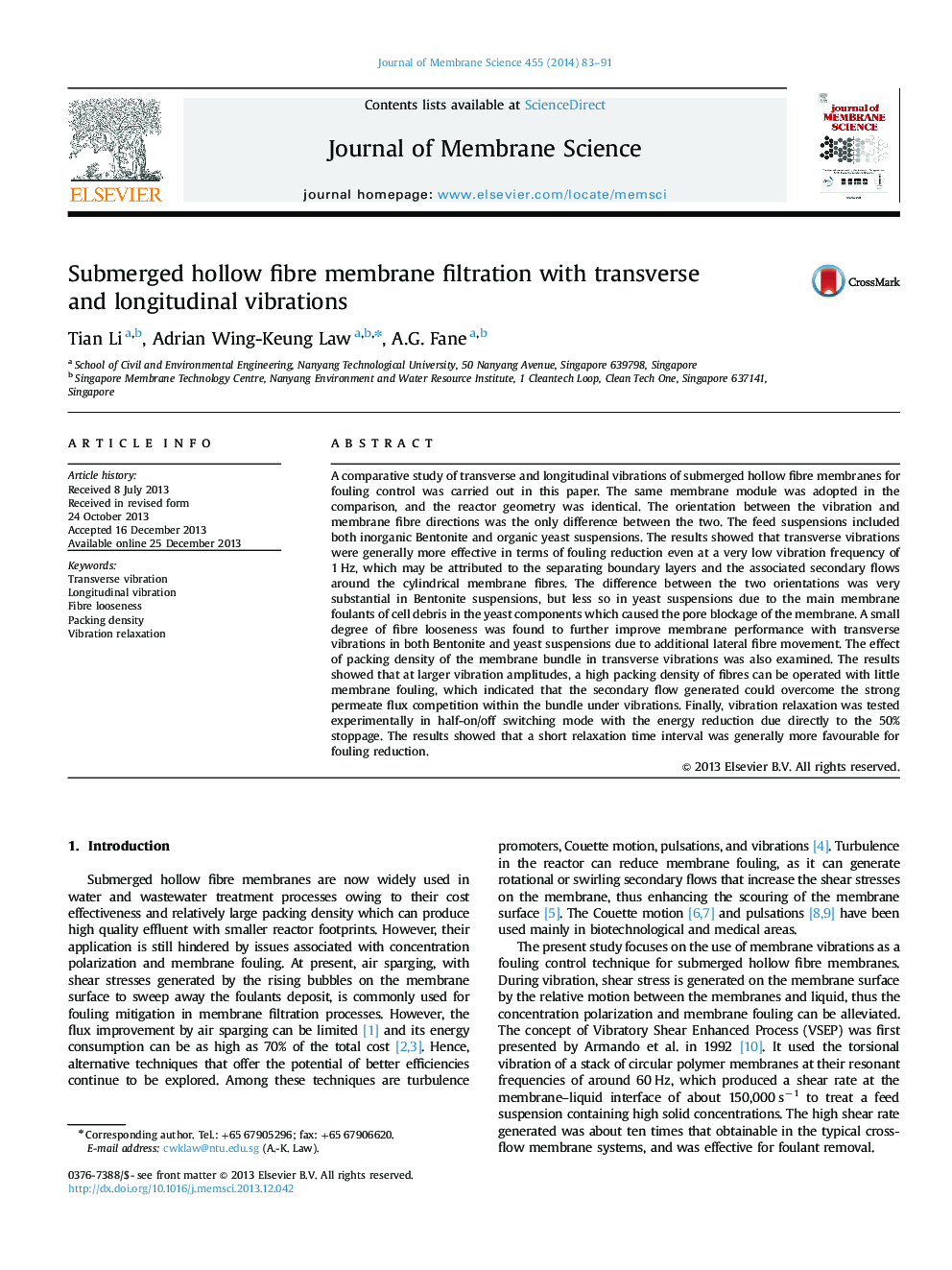| کد مقاله | کد نشریه | سال انتشار | مقاله انگلیسی | نسخه تمام متن |
|---|---|---|---|---|
| 633887 | 1456044 | 2014 | 9 صفحه PDF | دانلود رایگان |
• Transverse vibration is more effective than longitudinal vibration in terms of fouling control of submerged hollow fibre membranes.
• A small degree of fibre looseness increases the effectiveness of transverse vibrations.
• The effect of packing density of fibres with vibrations needs to be further evaluated.
• A short relaxation interval is more effective than a long relaxation interval with the same duration of vibrations.
A comparative study of transverse and longitudinal vibrations of submerged hollow fibre membranes for fouling control was carried out in this paper. The same membrane module was adopted in the comparison, and the reactor geometry was identical. The orientation between the vibration and membrane fibre directions was the only difference between the two. The feed suspensions included both inorganic Bentonite and organic yeast suspensions. The results showed that transverse vibrations were generally more effective in terms of fouling reduction even at a very low vibration frequency of 1 Hz, which may be attributed to the separating boundary layers and the associated secondary flows around the cylindrical membrane fibres. The difference between the two orientations was very substantial in Bentonite suspensions, but less so in yeast suspensions due to the main membrane foulants of cell debris in the yeast components which caused the pore blockage of the membrane. A small degree of fibre looseness was found to further improve membrane performance with transverse vibrations in both Bentonite and yeast suspensions due to additional lateral fibre movement. The effect of packing density of the membrane bundle in transverse vibrations was also examined. The results showed that at larger vibration amplitudes, a high packing density of fibres can be operated with little membrane fouling, which indicated that the secondary flow generated could overcome the strong permeate flux competition within the bundle under vibrations. Finally, vibration relaxation was tested experimentally in half-on/off switching mode with the energy reduction due directly to the 50% stoppage. The results showed that a short relaxation time interval was generally more favourable for fouling reduction.
Journal: Journal of Membrane Science - Volume 455, 1 April 2014, Pages 83–91
